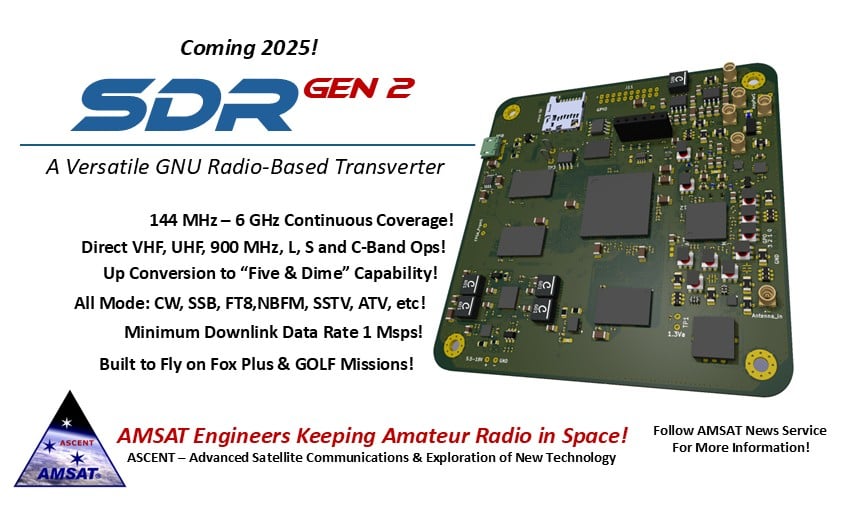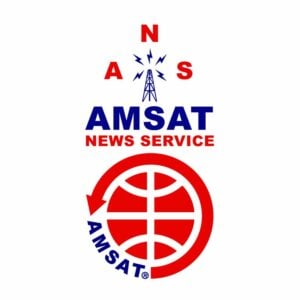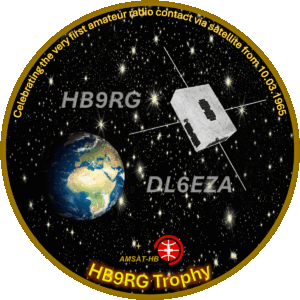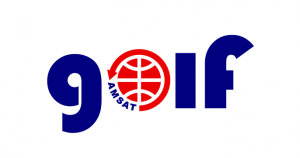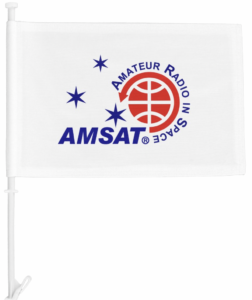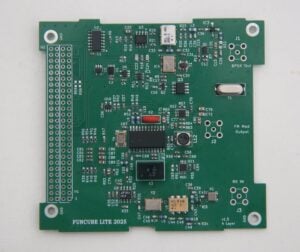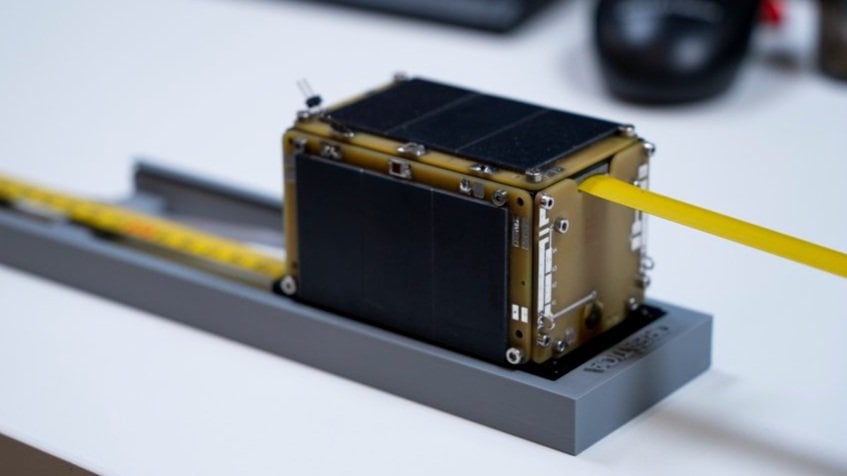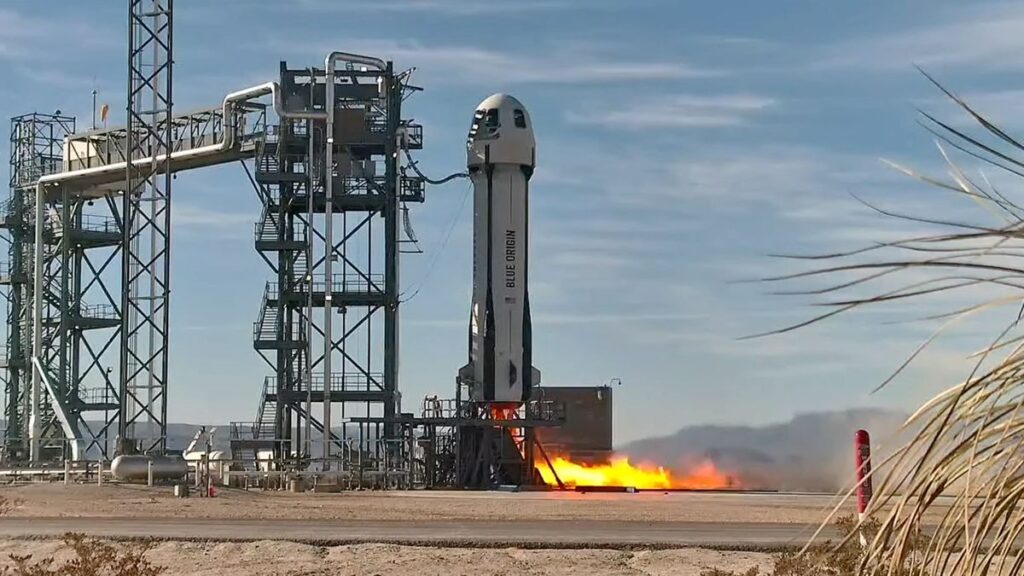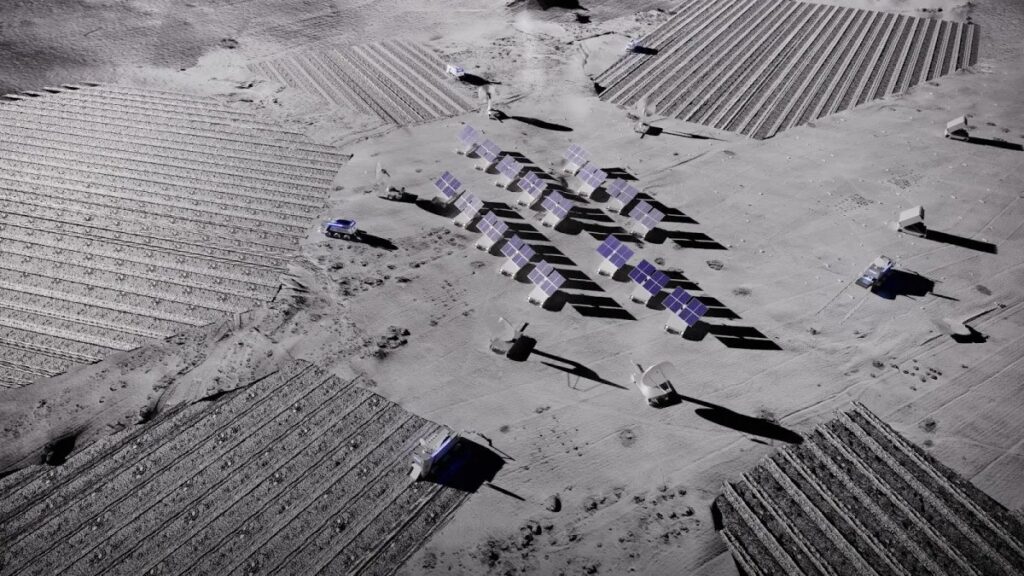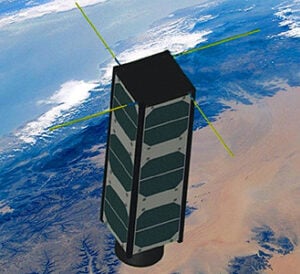In this edition:
* HADES-R FM Repeater Activated and Designated Spain-OSCAR 124 (SO-124)
* ARISS Completes Successful FRAM2Ham Simulation Event Using ISS Radio
* Blue Ghost and Resilience: Private Landers on Course for Lunar Touchdowns
* The Space Race Below: How Satellites Are Pushing the Limits in VLEO
* Beyond L1: Solar Sails Aim to Enhance Space Weather Alerts
* Changes to AMSAT-NA TLE Distribution for February 21, 2025
* ARISS News
* Upcoming Satellite Operations
* AMSAT Ambassador Activities
* Satellite Shorts From All Over
The AMSAT News Service bulletins are a free, weekly news and information service of AMSAT, the Radio Amateur Satellite Corporation. ANS publishes news related to Amateur Radio in Space including reports on the activities of a worldwide group of Amateur Radio operators who share an active interest in designing, building, launching and communicating through analog and digital Amateur Radio satellites.
The news feed on https://www.amsat.org publishes news of Amateur Radio in Space as soon as our volunteers can post it.
Please send any amateur satellite news or reports to: ans-editor [at] amsat.org
You can sign up for free e-mail delivery of the AMSAT News Service Bulletins via the ANS List; to join this list see: https://mailman.amsat.org/postorius/lists/ans.amsat.org/
ANS-054 AMSAT News Service Weekly Bulletins
To: All RADIO AMATEURS
From: Radio Amateur Satellite Corporation
712 H Street NE, Suite 1653
Washington, DC 20002
DATE 2025 Feb 23
HADES-R FM Repeater Activated and Designated Spain-OSCAR 124 (SO-124)
AMSAT-EA has confirmed that the FM repeater aboard the HADES-R satellite has been successfully activated and is now available for amateur radio operators worldwide. The activation took place on February 19th, 2025, following a series of telemetry and command tests to ensure the satellite’s stability and performance. Early reports indicate that the repeater is functioning as expected, providing strong two-way FM voice communications. AMSAT-EA expressed its gratitude to the amateur radio community for submitting telemetry reports, which contributed to the successful commissioning of the satellite.
HADES-R was launched aboard a Falcon 9 rocket from Vandenberg Space Force Base in California on January 14th, 2025, as part of SpaceX’s Transporter-12 mission. Developed by AMSAT-EA, the satellite carries an FM and digital repeater payload designed to provide communication services to amateur radio enthusiasts worldwide. It was deployed from the D-Orbit ION-SCV-016 orbital transfer vehicle on January 22nd and has since been transmitting telemetry data while undergoing operational testing. With the repeater now active, operators can use the uplink frequency of 145.925 MHz and the downlink frequency of 436.885 MHz for communication, with additional support for digital modes such as APRS and FSK telemetry at various data rates.
At the request of AMSAT-EA, AMSAT has officially designated HADES-R as Spain-OSCAR 124 (SO-124) in recognition of its contributions to amateur satellite communications. This designation underscores the satellite’s role in expanding access to space-based communications for the amateur radio community. AMSAT congratulates AMSAT-EA on this achievement and looks forward to the continued success of this and future projects. Meanwhile, amateur radio operators eagerly anticipate the upcoming launch of HADES-ICM on the Transporter-13 mission in March 2025, which will further enhance satellite-based communication capabilities.
[ANS thanks AMSAT-EA and Drew Glasbrenner, KO4MA, AMSAT VP Operations / OSCAR Number Administrator for the above information]
ARISS Completes Successful FRAM2Ham Simulation Event Using ISS Radio
The FRAM2Ham ISS Simulation event was a success, bringing together amateur radio enthusiasts and educators from around the world. Over five days, participants engaged in a simulated transmissions from the ISS Service Module Radio to mirror real-world conditions aboard a Dragon spacecraft, which will be used for the upcoming FRAM2 mission. This provided valuable practice for the FRAM2Ham competition. The event was organized and run by ARISS (Amateur Radio on the ISS). The ham radio community followed the request to withhold image postings until the official reveal date of February 20th. By the end of the event, 1,975 images had been submitted, with nearly half coming from students and educators, highlighting the educational impact of the initiative.
The FRAM2 mission will be the first human spaceflight in polar orbit, flying over the North and South poles. Named after the polar exploration ship Fram, the mission aims to highlight exploration, curiosity, and technological progress. A SpaceX Falcon 9 rocket will launch four astronauts from Europe and Australia into orbit for 3-5 days, with a targeted launch in spring 2025. The crew consists of mission commander Chun Wang of Malta, vehicle commander Jannicke Mikkelsen of Norway, pilot Rabea Rogge of Germany, and mission specialist Eric Philips of Australia.
As part of the mission, Rabea Rogge, LB9NJ/KD3AID, will operate the onboard amateur radio system, transmitting SSTV images for a high school and university student competition. These images will also be available to the general public. The FRAM2Ham competition is an experimental radio challenge open to high school and university students, where teams receive SSTV images of three geographical locations transmitted via the onboard ham radio. However, these images will be fragmented and scrambled, requiring participants to piece them together and determine their significance in polar history.
While anyone can receive the images, forming an international team may help solve the puzzle. Participants must correctly identify at least two of the three locations to qualify for prizes, which include QSL cards with space-flown FRAM2 mission stickers. The competition is open to members of educational institutions between the ages of 16-25 years from eligible countries, including Europe (CEPT), the US, Canada, and Australia. The ARISS International team has supported the event by organizing the FRAM2Ham ISS Simulation to help participants develop skills in acquiring images for the competition. For more information, visit the FRAM2HAM website at https://fram2ham.com and the ARISS website at https://ariss.org.
[ANS thanks ARISS and Fram2Ham for the above information]
Blue Ghost and Resilience: Private Landers on Course for Lunar Touchdowns
Firefly Aerospace’s Blue Ghost lunar lander has successfully lowered its orbit, bringing it closer to the moon’s surface as it prepares for a historic landing attempt. The spacecraft, part of Firefly’s “Ghost Riders in the Sky” mission, completed a three-minute, 18-second engine burn that reduced its altitude to 75 miles (120 kilometers) above the lunar surface. This maneuver marks a critical phase of the mission as the lander remains in this orbit until its descent begins in less than two weeks.
In a recent update on X, Firefly Aerospace shared a video showcasing Blue Ghost’s new perspective of the lunar surface. The company also warned of intermittent communications blackouts as the lander orbits around the moon’s far side. While on the near side, mission teams are receiving data and refining plans for additional engine burns that will bring Blue Ghost even closer to its intended landing site. The mission is on track for touchdown on March 2nd.
Blue Ghost was launched last month aboard a SpaceX Falcon 9 rocket from NASA’s Kennedy Space Center in Florida. It is part of NASA’s Commercial Lunar Payload Services (CLPS) program, which contracts private companies to deliver scientific instruments and technology demonstrations to the moon. The lander is carrying 10 NASA payloads designed to study the lunar environment and aid future Artemis program missions.
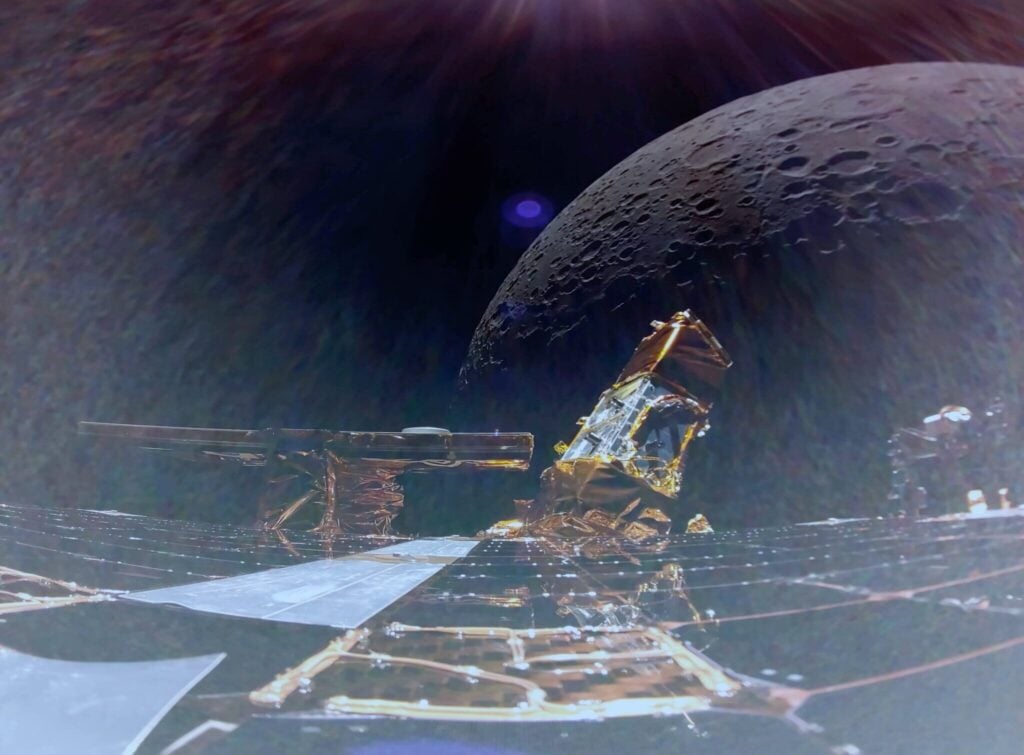
Resilience recently performed a lunar flyby on February 14th, passing within 5,220 miles (8,400 kilometers) of the moon’s surface. The maneuver provided a gravity assist that adjusted its trajectory for a smoother arrival into lunar orbit in early May. The lander captured and transmitted a striking image of the lunar surface from 8,972 miles (14,439 kilometers) away, marking a milestone for Japan’s private space industry.
If successful, Blue Ghost will become the second private spacecraft to land on the moon. The lander is set to operate for one full lunar day, equivalent to about two weeks, before losing power as the sun sets. During that time, its NASA payloads will conduct experiments, collect samples, and test new technology. These efforts will contribute to ongoing lunar exploration and preparations for the Artemis program’s future crewed missions to the moon.
[ANS thanks the Josh Dinner / Mike Wall, Space.com, for the above information]
The 2025 AMSAT President’s Club Coins Have Just Arrived!
Celebrating the 40th Anniversary of Amateur Radio on Human Spaceflight
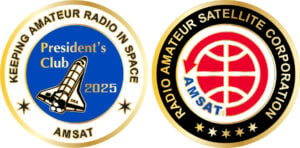
Help Support GOLF and Fox Plus.
Join the AMSAT President’s Club today!
The Space Race Below: How Satellites Are Pushing the Limits in VLEO
The race to explore the lowest reaches of space is gaining momentum as companies work to deploy satellites in Very Low Earth Orbit (VLEO). This untapped region, situated just above Earth’s atmosphere, presents both challenges and unprecedented opportunities. While traditional satellites operate at altitudes ranging from hundreds to thousands of miles above Earth, these new “sky skimmers” will navigate much lower, skimming the upper reaches of the atmosphere. The potential advantages of VLEO satellites include enhanced Earth observation, improved communications, and the ability to remain operational in orbit indefinitely through advanced propulsion technologies.
Satellites in VLEO face a difficult balancing act. Unlike their higher-altitude counterparts, these spacecraft must contend with significant atmospheric drag, which constantly threatens to pull them back to Earth. Traditional satellites rely on their horizontal momentum to stay in orbit, but in VLEO, this is not enough. To remain aloft, engineers are exploring Air-Breathing Electric Propulsion (ABEP) systems, which harvest atmospheric molecules and convert them into thrust. If successful, these technologies could allow satellites to sustain themselves indefinitely without the need for large fuel reserves.
Several companies and institutions are actively pursuing this technology. The European Space Agency’s Gravity Field and Steady-State Ocean Circulation Explorer (GOCE) satellite was an early attempt to operate in VLEO, using ion propulsion to counteract drag. More recently, startups such as Kreios Space and Stellar Advanced Concepts have been developing ABEP prototypes, with planned test missions in the coming years. Governments are also getting involved, with the U.S. Department of Defense investing millions in research programs such as Otter, which aims to create operational VLEO satellites.
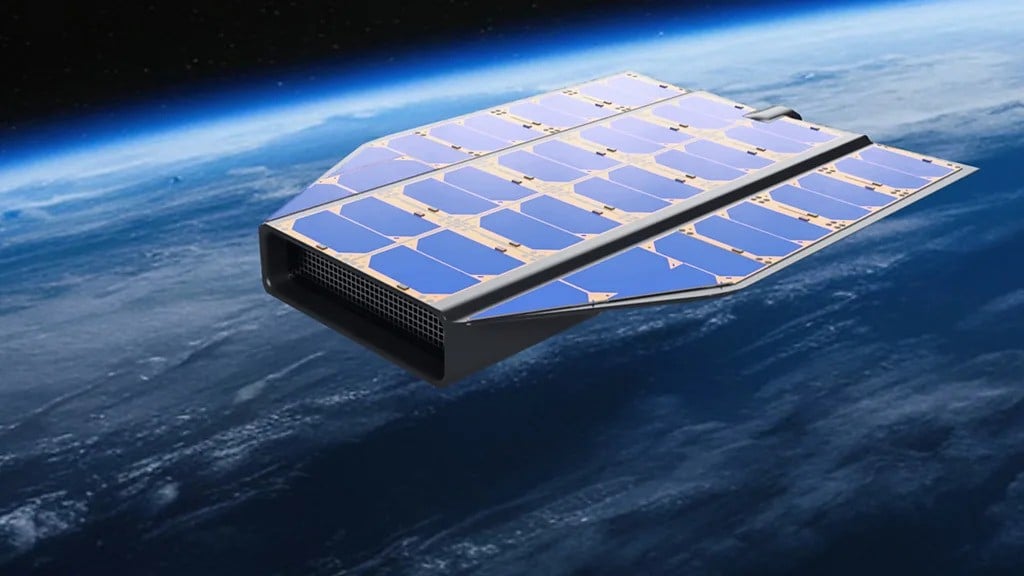
The benefits of VLEO satellites extend beyond military and scientific applications. Their close proximity to Earth enables higher-resolution imaging, which could be useful for agriculture, disaster monitoring, and environmental studies. Additionally, communications networks, such as satellite-based internet services, could see a significant boost from VLEO technology. Lower-altitude satellites could provide faster connections and direct-to-device communication capabilities, potentially revolutionizing global internet access.
Despite the promise of VLEO, challenges remain. The region is highly dynamic, with atmospheric conditions influenced by solar activity, which can cause unexpected changes in drag forces. Additionally, while VLEO naturally clears debris by pulling defunct satellites back to Earth, high-energy collisions can still send fragments into higher orbits, creating long-term space debris hazards. As the race to dominate VLEO accelerates, companies and governments must address these risks while capitalizing on the immense potential of this new frontier in space technology.
[ANS thanks the Jonathan O’Callaghan, BBC, for the above information]
Beyond L1: Solar Sails Aim to Enhance Space Weather Alerts
Scientists are developing solar sail satellites as a potential early warning system for geomagnetic storms, which can disrupt technological systems on Earth. These sails, which harness sunlight for propulsion, could enhance space travel and improve forecasting for space weather events.
Solar sailing operates similarly to traditional sailing, except it uses photons from the sun instead of wind. “A lot of us have experienced sailing; it’s exactly like that,” said Irfan Azeem, division chief at NOAA’s Office of Space Weather Observations. “Instead of using air, we’re using the light emitted by the sun to propel our satellites.”
Unlike traditional propulsion systems, solar sails offer a cost-effective means of maneuvering satellites without fuel. “This is a very novel technology,” Azeem added. “We have traditionally relied on propulsion to take satellites from one place to another, and solar sails are providing a new, efficient way to travel in space.” NOAA’s satellites play a vital role in space weather monitoring, gathering data that helps issue warnings for potentially disruptive solar flares.
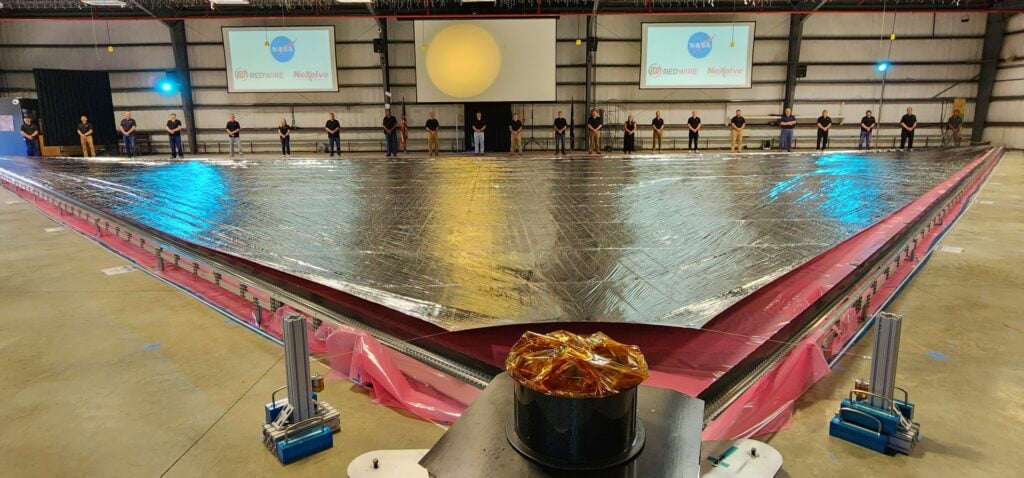
One major advantage of solar sails is their ability to travel beyond the Lagrange One Point (L1), a location about 932,000 miles (1.5 million kilometers) from Earth where satellites currently observe the sun. “L1 provides a semistable orbit for persistent sun monitoring,” Azeem explained. “But if you want to go further, you need chemical rockets. Solar sails offer a cost-effective alternative for moving upstream.” By positioning satellites further ahead in the solar wind, NOAA estimates they could improve geomagnetic storm lead times by 50%.
At the American Meteorological Society’s annual meeting, NOAA provided updates on the Solar Cruiser project, a collaboration with NASA. The full-scale solar sail, set to span 17,793 square feet (1,653 square meters), is under construction. The spacecraft will include four sails, each built separately, with completion expected by February 2026. NOAA aims to secure a rideshare launch by 2029. “I’m most excited about the complexity of integrating different disciplines,” Azeem said. “Advances in material science and other fields are helping us push space weather monitoring to the next level.”
[ANS thanks the Meredith Garofalo, Space.com, for the above information]
Changes to AMSAT-NA TLE Distribution for February 21, 2025
Two Line Elements or TLEs, often referred to as Keplerian elements or keps in the amateur community, are the inputs to the SGP4 standard mathematical model of spacecraft orbits used by most amateur tracking programs. Weekly updates are completely adequate for most amateur satellites. TLE bulletin files are updated daily in the first hour of the UTC day. New bulletin files will be posted immediately after reliable elements become available for new amateur satellites. More information may be found at https://www.amsat.org/keplerian-elements-resources/.
NOTICE: In an effort to minimize confusion between sources of two line element sets, AMSAT is adopting the convention of listing the USSF/NORAD Satellite Catalog name first, followed by any secondary name or names in parentheses. For example, “POEM 4 (BGS ARPIT)” was added recently where “POEM 4” is the name that appears in the US Space Force Satellite Catalog, and “BGS ARPIT” is the name best known within the amateur satellite community. Expect name changes for affected satellites in the coming weeks as this change is fully implemented.
This week there are no additions or deletions to the AMSAT TLE distribution.
[ANS thanks AMSAT Orbital Elements page for the above information]
ARISS NEWS
Amateurs and others around the world may listen in on contacts between amateurs operating in schools and allowing students to interact with astronauts and cosmonauts aboard the International Space Station. The downlink frequency on which to listen is 145.800 MHz worldwide.
+ Recently Completed
Woodward Mill Elementary School, Lawrenceville, Georgia, direct via K4RGK
The ISS callsign was NA1SS
The scheduled crewmember was Don Pettit KD5MDT
The ARISS mentor was K4RGK
Contact was successful: Thu 2025-02-20 16:37:28 UTC
Watch for Livestream at https://www.youtube.com/live/NfxlSEUOg6A
Congratulations to the Woodward Mill Elementary School students!
Royal Moroccan Air Academy, Marrakech, Morocco, direct via CN8ERA
The ISS callsign was OR4ISS
The scheduled crewmember was Don Pettit KD5MDT
The ARISS mentor was IN3GHZ
Contact was successful: Fri 2025-02-21 11:12:20 UTC
Congratulations to the Royal Moroccan Air Academy students!
+ Upcoming Contacts
None currently scheduled.
Many times a school may make a last minute decision to do a Livestream or run into a last minute glitch requiring a change of the URL but we at ARISS may not get the URL in time for publication. You can always check https://live.ariss.org/ to see if a school is Livestreaming.
The crossband repeater continues to be active (145.990 MHz up {PL 67} & 437.800 MHz down). If any crewmember is so inclined, all they have to do is pick up the microphone, raise the volume up, and talk on the crossband repeater. So give a listen, you just never know.
The packet system is also active (145.825 MHz up & down).
As always, if there is an EVA, a docking, or an undocking; the ARISS radios are turned off as part of the safety protocol.
Note, all times are approximate. It is recommended that you do your own orbital prediction or start listening about 10 minutes before the listed time.
The latest information on the operation mode can be found at https://www.ariss.org/current-status-of-iss-stations.html
The latest list of frequencies in use can be found at https://www.ariss.org/contact-the-iss.html
[ANS thanks Charlie Sufana, AJ9N, one of the ARISS operation team mentors for the above information]
Upcoming Satellite Operations
J68HZ (op: WA4PGM) active from 02/26 to 03/04 from grid square FK93.
A growing number of satellite rovers are currently engaged in sharing their grid square activations on https://hams.at. By visiting the website, you gain easy access to comprehensive information about the operators responsible for activating specific grid squares. Additionally, you have the ability to assess the match score between yourself and a particular rover for a given pass, while also being able to identify the upcoming satellite passes that are accessible from your location.
[ANS thanks Ian Parsons, K5ZM, AMSAT rover page manager, for the above information]
AMSAT Ambassador Activities
AMSAT Ambassadors provide presentations, demonstrate communicating through amateur satellites, and host information tables at club meetings, hamfests, conventions, maker faires, and other events.
AMSAT Ambassador Clint Bradford, K6LCS, says,
“Think a 75-minute presentation on “working the easy satellites” would be appropriate for your club or event? Let me know by emailing me at k6lcsclint (at) gmail (dot) com or calling me at 909-999-SATS (7287)!”
Clint has NEVER given the exact same show twice: EACH of the 150+ presentations so far has been customized/tailored to their audiences.
Midwinter Madness Hamfest – March 22nd, 2025
Buffalo Civic Center
1306 County Road 134
Buffalo MN 55313
https://k0ltc.org/midwinter-madness/
KØJM, ADØHJ, KEØPBR
Southeastern VHF Conference 2025 – April 4th thru 5th, 2025
Quality Inn Exit 4
3095 Wilma Rudolph Boulevard
Clarksville, TN 37040
https://svhfs.org/wp/2025-conference/
W4FCL
[ANS thanks Bo Lowrey, W4FCL, Director – AMSAT Ambassador Program, for the above information]
AMSAT Remove Before Flight Key Tags Now Available
Yes, These are the Real Thing!
Your $20 Donation Goes to Help Fly a Fox-Plus Satellite
Includes First Class Postage (Sorry – U.S. Addresses Only)
Order Today at https://www.amsat.org/product/amsat-remove-before-flight-keychain
Satellite Shorts From All Over
+ In 2024, NASA’s Search and Rescue technologies contributed to saving 407 lives in the U.S., including 314 at sea, 41 in aviation incidents, and 52 through personal locator beacons. These efforts are part of the international Cospas-Sarsat satellite-aided search and rescue system, which has helped save over 50,000 lives worldwide since 1982. Using GPS satellites, emergency beacons transmit distress signals to the Cospas-Sarsat network, enabling first responders to locate and rescue those in need. NASA’s Search and Rescue Office, a division of the SCaN Program, has been involved in rescue operations since 1979 and continues to enhance beacon technology for both Earth-based and space missions. The Advanced Next-Generation Emergency Locator (ANGEL) beacon is being developed to support crew recovery efforts, including for Artemis missions returning from deep space. NASA collaborates with NOAA, the U.S. Coast Guard, the U.S. Air Force, and other agencies to ensure rapid response and rescue operations across land, sea, and air. (ANS thanks NASA for the above information)
+ NASA and SpaceX have decided to swap Crew Dragon spacecraft for the Crew-10 mission, opting to use the previously flown Endurance instead of a newly built capsule to prevent further delays. Endurance, which had been assigned to the private Ax-4 mission, will now support Crew-10, allowing the launch to be accelerated from late March to no earlier than March 12th. The original delay stemmed from setbacks in assembling and testing the new Crew Dragon, pushing the Crew-10 launch from February to March. Crew-9, currently on the ISS, will return a few days after Crew-10 arrives, bringing back NASA astronauts Suni Williams and Butch Wilmore, whose extended stay became a political topic after Elon Musk and former President Trump criticized the delay. Williams, however, dismissed claims that she and Wilmore were “abandoned,” stating they were safe and had all necessary resources aboard the station. The change in spacecraft does not alter the Crew-10 lineup, commanded by NASA astronaut Anne McClain, but it raises uncertainty about the Ax-4 mission timeline, which was originally planned for April. (ANS thanks SpaceNews for the above information)
+ NASA’s SPHEREx telescope, set to launch no earlier than February 27th aboard a SpaceX Falcon 9 rocket, will explore cosmic reservoirs of life’s building blocks. It will scan space for water, carbon dioxide, and carbon monoxide frozen onto interstellar dust grains, which exist in molecular clouds where stars and planets form. Scientists believe these icy reservoirs played a crucial role in shaping Earth’s oceans and other celestial bodies’ water content. Unlike previous telescopes that analyzed specific regions, SPHEREx will conduct an extensive 3D spectral survey, identifying ice compositions across different environments. The mission aims to resolve longstanding questions about molecular cloud chemistry, particularly why previous missions, like SWAS, detected less gaseous water than expected. By working alongside telescopes such as Webb, SPHEREx will refine our understanding of planet formation and the distribution of essential life-building compounds across the universe. (ANS thanks SpaceDaily for the above information)
+ SpaceX is preparing for its eighth Starship launch (IFT-8) by conducting crucial static fire tests at its Starbase facility in Texas. The company recently ignited all 33 Raptor engines on the Super Heavy booster and completed a dynamic engine test for the Starship stage to simulate various in-flight conditions. These tests mark a key milestone before the vehicle’s final stacking, where the two massive components will be joined for launch. Once stacked, the fully integrated Starship and Super Heavy system will stand an impressive 403 feet (123 meters) tall, making it the most powerful rocket ever built. Starship’s previous test flight, IFT-7, had mixed results, with a successful booster catch but a loss of communication with the Starship stage, which ultimately disintegrated over the Caribbean. SpaceX continues to refine the vehicle with each iteration, incorporating new hardware to improve performance and reliability. While IFT-8 could launch by the end of February, the schedule remains dependent on FAA approval and final preparations. (ANS thanks Space.com for the above information)
Join AMSAT today at https://launch.amsat.org/
In addition to regular membership, AMSAT offers membership to:
* Societies (a recognized group, clubs or organization).
* Primary and secondary school students are eligible for membership at one-half the standard yearly rate.
* Post-secondary school students enrolled in at least half-time status shall be eligible for the student rate for a maximum of 6 post-secondary years in this status.
* Memberships are available for annual and lifetime terms.
Contact info [at] amsat.org for additional membership information.
73 and remember to help Keep Amateur Radio in Space!
This week’s ANS Editor, Mitch Ahrenstorff, ADØHJ
mahrenstorff [at] amsat.org

